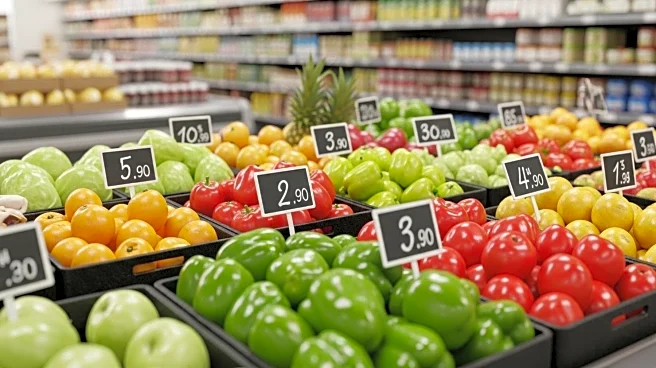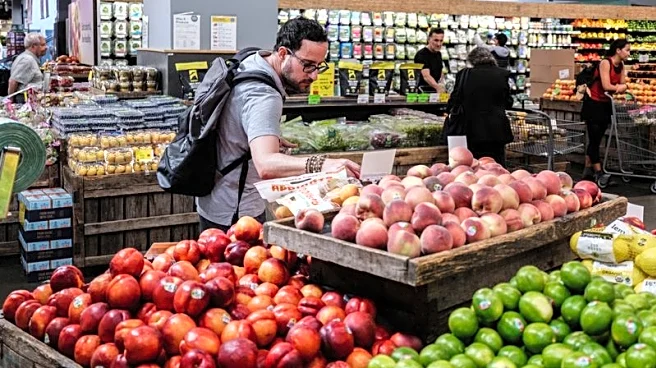What's Happening?
The Bureau of Labor Statistics has released a report indicating significant price increases across tariff-sensitive goods, particularly in the 'food at home' category. This category experienced its largest monthly gain since August 2022. The report highlights specific price hikes for various grocery items, including roasted coffee, uncooked beef steaks, and eggs, among others. Additionally, prices for apparel, audio products, motor parts, furniture, and new cars have also risen. Energy prices saw a 0.7% increase. The report notes that inflation rates are currently exceeding the Federal Reserve's target of 2%, presenting challenges for the agency amid a softening labor market.
Why It's Important?
The rising prices in grocery aisles due to tariffs have significant implications for consumers and the broader economy. As inflation surpasses the Federal Reserve's target, it may influence monetary policy decisions, potentially leading to interest rate adjustments. Consumers face increased costs for essential goods, which could impact household budgets and spending patterns. The report's findings also highlight regional disparities in inflation, with cities like Tampa, San Diego, and Philadelphia experiencing the most significant increases. These developments could affect economic stability and consumer confidence, influencing market dynamics and policy considerations.
What's Next?
The Federal Reserve faces a critical decision regarding interest rates, as inflation remains above its target. According to the CME Group's FedWatch tool, there is growing speculation that the Fed may cut rates in the near future, with potential further reductions later in the year. This decision will be closely watched by economic stakeholders, as it could impact borrowing costs, investment strategies, and overall economic growth. Additionally, consumers and businesses may need to adapt to the changing price landscape, potentially seeking alternative solutions to mitigate the impact of rising costs.












